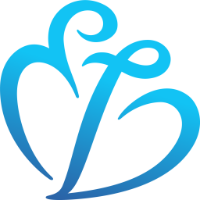The following signs, or “red flags,” do not prove that a person is a victim of human trafficking, but they should cause us to be alert for signs or behaviors that, cumulatively, can suggest such a conclusion—and help us know when to act. (Click here for a complete definition of human trafficking.)
15 signs that a CHILD could be a victim of human trafficking:
- Changes in their school attendance or activities, appearance, friend groups, interests, vocabulary, demeanor, attitude or sexual behavior
- Avoids eye contact, especially if this is new behavior
- Possesses luxury items like manicures, designer clothing, purses, etc., without an explainable source of income, especially if luxuries appear suddenly
- Gets into trouble with older teens or adults
- Talks to/touches adults inappropriately, especially men
- Wears sexually provocative clothing
- Acquires certain types of tattoos or branding (such as someone’s initials)
- Possesses a hotel key card, or refillable gift cards
- Owns multiple phones and/or social media accounts and lies about their existence
- Accompanies an adult with a connection to them that seems “off” and may be a person that’s clearly of a different race or ethnicity
- Possesses sexually provocative images on their phone or online accounts
- Has unexplained injuries such as bruising, swelling, redness or cigarette burns
- Claims to have older boyfriend/girlfriend
- Doesn’t have a valid I.D.
- Has attempted to run away multiple times
Rather than exhibiting an expected “cry for help,” many teens shift to a hardened exterior, which can be the result of psychological defense mechanisms or evidence they have fallen under the psychological, emotional and physical control of another. Don’t be deceived by a child’s age; sadly, increasingly younger children are being trafficked. Watch for a child calling an adult male “uncle” (or “aunt” or “auntie” to a female) who is clearly of a different race or ethnicity than the child. (Click here to learn 10 ways to protect your child from human trafficking.) Another word of caution: mixed families and biracial couples make this a difficult warning sign to trust, so it is unwise to consider this evidence alone. Watch adult-child interactions, which may provide more reliable clues about their relationship.
Also, the same cautions apply as those below, after the following list. The primary advice is to not confront someone who appears to be a trafficker, and beware of helping a person who appears to be a victim—call a hotline instead.
15 signs that an ADULT could be a victim of human trafficking (including signs that a person has been trafficked into domestic service or industrial work):
- Third-party control of schedule and social interactions
- Appears to be dominated by another; looks to another for “permission”
- Isolation from community, family or friends
- Evidence of violence, such as bruising, swelling or scarring (such as cigarette burns)
- Certain types of tattoos or branding (such as someone’s initials)
- Sexually provocative clothing/makeup that’s inappropriate for the weather or situation
- Inability to speak English
- Frightened, nervous, defensive
- Frequent living situation changes, erratic schedule
- Identification documents (e.g., passport, driver’s license) held by third party
- Lack of knowledge about the community
- Malnutrition, dehydration or exhaustion
- Dizziness, headaches, or memory loss (possible brain injury from beatings, trauma)
- Untreated chronic disease; dental or vision problems
- Chronic back pain, muscle strains, cardiovascular and respiratory issues related to exposure to chemicals, serious industrial injury (male victims primarily)
If you see a stranger who exhibits any of these signs, it is probably best that you not approach them. The person you suspect to be trafficked may be with, or are being watched by, a “handler” who may be dangerous. Instead, call the National Human Trafficking Hotline 24/7 at 1-888-373-7888 to report the situation and acquire guidance from an expert. (Canada’s hotline is 1-833-900-1010, and many other countries have hotlines as well.)
If you see someone you know or with whom you are familiar (such as someone who lives nearby) with a person who looks suspicious, you probably have more time to observe behavior—but don’t delay longer than necessary; their lives may depend on your timely action. When in doubt, call the hotline. Consider speaking with a police officer, teacher or healthcare professional; these individuals are trained to watch for and respond to suspected human trafficking cases.
(A word of caution: there is always the possibility that such authorities are somehow involved in a victim’s exploitation, such as receiving payments to cooperate or look the other way. While this problem is more common in developing countries, always use caution when alerting the authorities; watch for signs they might not be a safe option and follow-up whenever possible. That’s why calling the hotline is usually the wisest option. Leading up to a Super Bowl game in Tampa, for example, a sting operation resulted in the arrest of 71 persons charged with human trafficking crimes, some of whom were members of the military and one a teacher.)
Be vigilant: you may be the only one who can stop a person from being trafficked. All it takes is a phone call.
